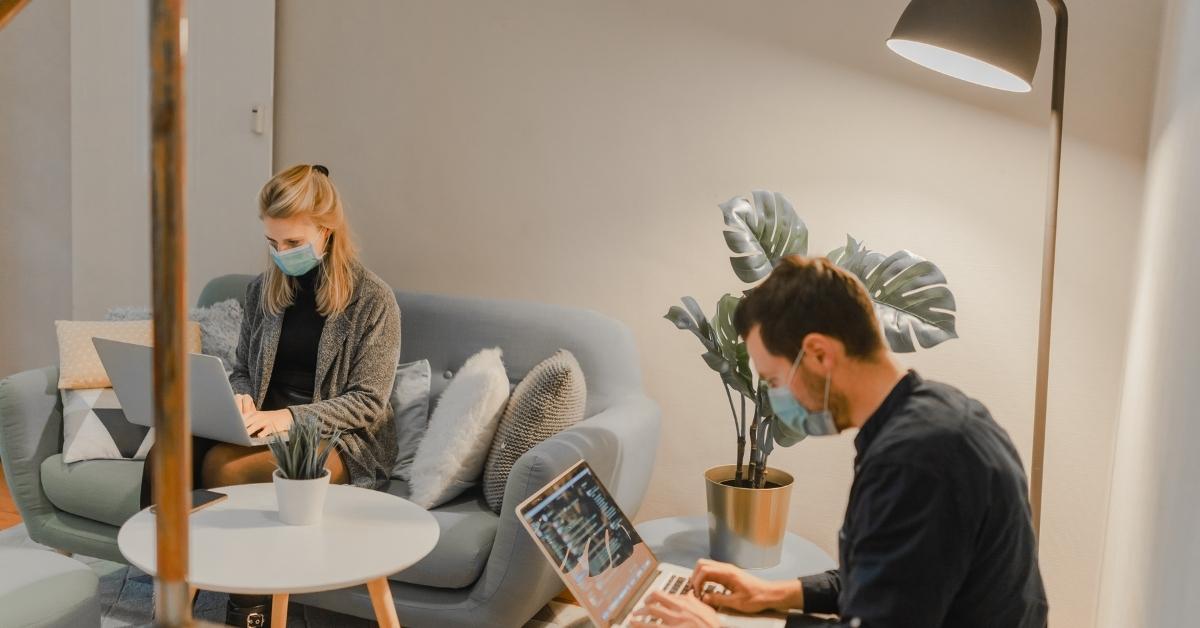How to properly ventilate?

How do you ventilate correctly? Countless experts have already investigated this question and come to similar conclusions: Ventilate at regular intervals and observe all factors for healthy indoor air, this protects the health and performance of people in closed rooms.
Proper Ventilation in Offices, Classrooms, and Lecture Halls
Various data analyses have shown in corresponding studies that around 57 percent of sickness-related absences of employees were due to poor ventilation. Conversely, this would mean that these periods of sick leave could have been prevented if a proper ventilation concept had been implemented. Unfortunately, such a concept is not actually applied in offices, schools, and lecture halls; or ventilation is not carried out when there is a need for it, only when it is convenient.
Hence the question:
How to properly ventilate?
The following ventilation rules are helpful in this respect, as they help to massively improve the air quality in enclosed working and learning spaces:
- Ventilate directly in the morning before classes or work begins.
- Plan breaks for ventilation at regular intervals – throughout the day!
- When ventilating, rely on forced ventilation or ventilation by draught.
- Keep window sills free of objects, they would have to be taken down first before airing. Most people will then only tilt the windows due to their comfort.
- Also, think about airing the corridors!
- In summer, let the rooms cool down early in the morning or at night.
- Especially in winter, ventilate only briefly but intensively.
There are currently calls for decentralized ventilation systems in offices and classrooms. They have the advantage that they provide fresh air before the first alarm signs of poor indoor air quality appear. However, it is important that the ventilation systems are adapted to the respective room and that the noise level of the systems is also acceptable.
Proper Ventilation during Covid times
Human resource managers and business owners are currently looking for solutions on how to make the work environment healthier for employees. The workplace should also be safe in Corona times, and sick leave should be avoided. This is where the interests overlap with those of the employees, because they too do not want to take any risks and want their workplace to be not only attractive, but above all not hazardous to their health. The solution to this initial question is found in the answer to the question:
How to properly ventilate when a viral load is suspected in the room?
Proper ventilation complements the protective measures: Keeping your distance, hygiene, wearing masks, and ventilation. Important to know: According to the current state of science, corona spreads through aerosols that can remain in the air for a long time in closed rooms. Poorly ventilated rooms therefore significantly increase the risk of infection. Conversely, proper ventilation can ensure that the viral load in the air is reduced. Important aspects here are:
- Please always ensure a sufficient supply of fresh air by natural means or by technical ventilation systems!
- Employees must be aware that there is no such thing as zero risk of infection, but that ventilation and other measures can significantly reduce the risk.
- Ventilate every 20 minutes for 5 - 10 minutes!
- Shock or cross ventilation for a few minutes after a short time
- In air conditioning systems, recirculation should be minimised or even discontinued. If necessary, use HEPA filters.
- Use control systems such as those from AIRICA to keep a constant eye on the optimum room air quality and to initiate appropriate measures if necessary.
Mobile air purifiers can be a temporary addition to ventilation systems and natural ventilation if used properly. In companies, however, a risk assessment must be carried out before their use
Caution: Fans distribute the aerosols in the room and can sometimes cause the risk of infection to increase significantly
A reduction of the aerosol concentration is only possible if the device is used correctly and adapted to the local conditions (flow conditions, room geometry, location of the device, etc.).
Shock ventilation instead of continuous ventilation
With shock ventilation, all windows are opened completely several times a day, which ensures a sufficient exchange of air and a reduction in humidity in the room. Ventilation by draught with open windows facing each other has proved to be particularly effective in practice. If the windows can only be opened on one side, the ventilation process must be correspondingly longer. But how do you ventilate correctly?
It is important not to ventilate continuously with the windows tilted, as this results in very little air exchange. The warm air that rises from the radiators is lost with this ventilation technique and the room cools down in the long run. In addition, cold spots can form at the window. This is where the fine water droplets from the air condense, increasing the risk of mold growth.
During forced ventilation, the thermostats should be turned down, this ensures less loss of heating energy. Experts recommend airing at least three to four times a day, in offices and classrooms even every 20 minutes. The frequency of shock ventilation thus depends on the number of people in a room, because the more people congregate in a small area, the higher the carbon dioxide emissions and the more likely it is that negative effects of bad air will become apparent.
Tip: In winter, airing should be done for five minutes, between 15 and 20 minutes are appropriate in autumn and spring. In summer, it may be necessary to leave the windows open for around 30 minutes.
Measuring Room Temperature and Humidity
A thermometer and a hygrometer can be used to measure the temperature and humidity of the air in a room. Both have an immense impact on the indoor climate and should therefore be monitored regularly. The optimum temperature in working rooms is 20 °C, in summer temperatures of up to 25 °C are pleasant. The body is at its most efficient at these ambient temperatures.
Relative humidity should be between 40 and 60 percent. If it is below this level, irritation of the eyes, skin, or mucous membranes can occur and the immune system is weakened. This paves the way for colds! Excessive humidity, on the other hand, can lead to the growth of mold, which pollutes the air in the room and can cause respiratory problems and even asthma.
Recognize warning signals
If the CO2 concentration in the air increases, fatigue, concentration problems, and a general feeling of malaise can occur. Headaches also appear, employees feel the air is thick and unpleasant. High time to ventilate! Professional monitoring of the room air, checking temperature, humidity, and CO2 content as well as other parameters, can help to ensure healthy air in schools and offices. Systems such as AIRICA's provide information on the right time to ventilate and show the development of indoor air quality based on the historical data. With the help of this data, optimally coordinated improvement measures can be introduced, which can ultimately lead to a higher performance of the students or employees.
How do you Ventilate Properly? A Conclusion and a Song of Praise for Impulse Ventilation
From the aforementioned points, it is clear that one should not wait for warning signals from the body before paying attention to indoor air quality. In order to avoid health effects and to improve concentration, motivation, and performance, it is optimal to rely on expelled air at regular intervals. This also ensures a reduction in the viral load in the air by reducing the aerosol concentration. In addition, room air monitoring systems are available to provide appropriate recommendations for action in the event of poor air quality.

